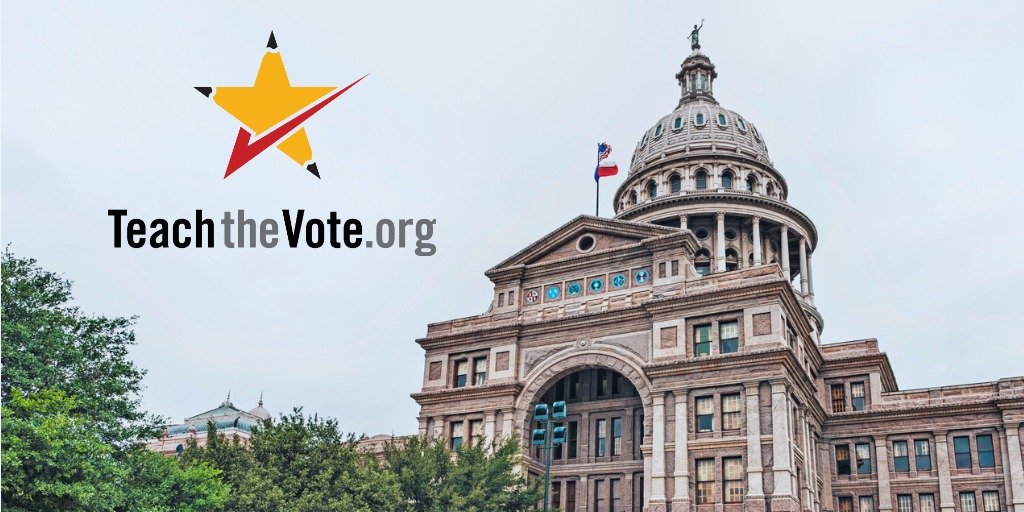Uncertain about HB 2 pay raises? You are not alone

Date Posted: 6/12/2025 | Author: ATPE Staff
6/13/25 Update: This post has been updated to reflect administrator guidance released Thursday by the Texas Education Agency.
House Bill (HB) 2, the 89th Legislature’s primary school funding bill, creates new and expanded allotments to support raises for educators and other non-administrative school employees beginning in the 2025–26 school year. The bill establishes three mechanisms for funding compensation increases: the Teacher Retention Allotment (TRA), the Support Staff Retention Allotment (SSRA), and an expanded Teacher Incentive Allotment (TIA).
Even though many districts have already adopted budgets and approved salaries for 2025-26, they must still comply with HB 2. These raises are legally considered independent of existing contracts and may be added mid-year without violating the Texas Constitution. However, implementation will be complicated. Many districts are facing budget shortfalls and trying to cut costs through attrition. HB 2 provides targeted compensation funding, but it doesn’t address broader budget gaps.
Let’s take a closer look at the three types of compensation increases in HB 2.
Teacher Retention Allotment (TRA)
The TRA provides per-teacher funding based on years of experience and district size:
|
Enrollment of 5,000 or less |
Enrollment of 5,001 or more |
||
|
3–4 years of experience |
$4,000 |
3–4 years of experience |
$2,500 |
|
5+ years of experience |
$8,000 |
5+ years |
$5,000 |
Under HB 2, a “classroom teacher” is an individual who meets the definition found in Section 5.001 of the Education Code, which says:
[A] "Classroom teacher" means an educator who is employed by a school district and who, not less than an average of four hours each day, teaches in an academic instructional setting or a career and technology instructional setting. The term does not include a teacher's aide or a full-time administrator.
This definition is broader than just teachers of record in that it should include those who teach the requisite number of hours but do not have their own classroom. However, the term generally does not include other educators subject to the minimum salary schedule such as counselors, librarians, and nurses, even if they hold teaching certificates. Eligibility may depend on individual duties, and guidance from the Texas Education Agency (TEA), and/or district coding. (See more on this below.)
HB 2 specifies districts must use TRA funds to increase salaries above what the teacher received or would have received in 2024–25 by the amounts listed above. The bill requires the raises to be TRS-creditable compensation and that increases be maintained in future years, which generally indicates they are not to be viewed as stipends. It does not, however, specify that districts must give these raises at the beginning of the year. In fact, the bill contains a provision that authorizes districts to provide these raises even after a teacher contract not contemplating the raise has been finalized.
A new provision adding uncertainty was included in the final bill in the waning days of the session. The provision allows districts applying to be designated as an “Enhanced Teacher Incentive Allotment (TIA) System” to use TRA funding for performance-based raises tied to teacher appraisal results, with flexibility built into their compensation plans, in lieu of following the distribution chart above. The Enhanced TIA System designation is new and will require TEA rule making prior to implementation. It is unknown at this time whether it will be available to districts during the 2025-26 school year.
Support Staff Retention Allotment (SSRA)
The SSRA provides districts $45 per student (based on adjusted average daily attendance and excluding virtual school students) to fund raises for full- or part-time nonadministrative staff not covered under the TRA. This includes school counselors, librarians, nurses, custodians, food service workers, bus drivers, administrative assistants, and part-time employees. Raises must begin in 2025-26 and be maintained in future years. Administrators, including assistant principals, principals, and central office administrators, such as superintendents, are not eligible. Although districts are required to use these funds only to increase the salaries of applicable staff, they are not required to increase the salary of all applicable staff or to increase salaries equally across the board.
Expanded Teacher Incentive Allotment (TIA)
HB 2 also expands the TIA. Designated teachers are now eligible for larger allotments. The new ranges are:
- $12,000 to $36,000 for the Master Teacher designation;
- $9,000 to $25,000 for Exemplary Teacher;
- $5,000 to $15,000 for Recognized Teacher; and
- $3,000 up to $9,000 for the new Acknowledged Teacher designation or National Board Certified teachers, assuming the State Board for Educator Certification (SBEC) maintains a designation for National Board Certification.
Early versions of the language removed National Board Certification, but due to push back from ATPE members and their colleagues, the Legislature delegated the final decision to SBEC.
Accurate PEIMS coding will directly impact compensation
Now that TEA has released guidance on how districts will receive HB 2 funds, one thing is clear: Accurate PEIMS coding is critical. TEA will use the PEIMS data that districts are already required to report each year, which includes the number of eligible teachers along with their years of experience, to determine how much TRA funding a district will receive, along with which employees will receive raises and in what amounts in those districts not participating in the new Enhanced TIA System.
TEA will use PEIMS staff classification data, specifically the 087 teacher classification, to determine how many employees meet the statutory definition of “classroom teacher,” meaning those who teach in an instructional setting at least four hours per day. Additionally, TEA will look at the “Total Years Professional Experience” as submitted in the PEIMS Fall Submission to determine years of experience for eligible employees.
Districts are expected to begin receiving funding in September 2025, even if raises are added after contracts are signed. For the upcoming school year, TEA will use 2024-25 data until the 2025-26 PEIMS Fall Submission window closes. At that point, they will use the fall 2025-26 data until TEA certifies the fall data in spring of 2026. In short, teachers and support staff should be aware that the accuracy of PEIMS reporting this fall will directly impact their compensation under HB 2.
Be vigilant when it comes to your own compensation
Educators should expect districts to follow the law, but you should also be vigilant when it comes to monitoring your own compensation. Stay informed as your district develops its HB 2 compensation plan, and don’t make assumptions based on any board conversations or votes before HB 2 was finalized and signed into law. Eligible ATPE members who have specific questions about their individual compensation may contact the ATPE Member Legal Services Department to request assistance.
CONVERSATION
RECOMMENDED FOR YOU

12/12/2025
Dec. 8 filing deadline sets the stage for 2026 elections
Now’s the time to confirm your voter registration and update it if necessary.

12/12/2025
Teach the Vote’s Week in Review: Dec. 12, 2025
TEA announces plans to take over Lake Worth, Connally, and Beaumont ISDs. Plus: The ATPE Podcast is back with a refreshed format.

12/12/2025
From The Texas Tribune: Texas Education Agency taking over Lake Worth, Connally and Beaumont school districts
The three interventions come after the state’s education agency announced plans to take over Fort Worth ISD in October.


How does this work for Bus Drivers. We are already barely making 30 hours a week, and only see a 4%raise on a salary less tha 20,000 is a ridiculous raise. Help me understand and tell me what I can do to change that.
where do district nurses fall?
Can a district exclude counselors to count as a teacher while they do count nurses and librarians in the HB 2 raises?
What about instructional coaches who have an array of job duties including co teaching, tutoring, substituting? When testing comes around, we are in the classroom every single Day!
Attention Paras: if you click the TEA link, you will see paras are included in the SSRA provision as follows: When determining what types of non-administrative staff are eligible for SSRA, statute provides specific details. Eligible support staff include teachers not eligible for a salary increase under the TRA, such as those with less than three years of experience. Eligible staff also include school counselors, librarians, school nurses, teacher’s assistants, custodial staff, food services staff, bus drivers, administrative assistants, and other support staff. Ineligible staff include the superintendent, chief executive officer, assistant superintendents or equivalents, principals or assistant principals, and employees in a centralized supervisory role. Not sure why they are not included in the language in the ATPE posts which left me feeling disheartened and got me clicking the included links.
I''m wondering the same thing as Becky Jones. If a small district pays $1000 above the state base. Will school districts only have to pay the difference between state base and the raise? Example: A teacher with 5+ years of experience would only receive $7000 as opposed to $8000? Is this correct and legal??
ATPE members can visit the "Rotunda" area of our online community to ask our lobby team questions about HB2 or other legislative issues from the most recent session. Log in and join the Rotunda now: https://community.atpe.org
My small district pay 1000 above state base. I was told they only have to pay the difference between state base and the raise. Example: Teacher with 5+ years of experience will only recieve 7000 as opposed to 8000. Is this correct and legal??
Does this include admin assistants/paraprofessionals?
Does this start in September 2025?
My district submitted an application for the Teacher Incentive Allotments in April 2025 and the application was accepted. Since my district will be in the implementation and data collection year, will they be able to use the TIA system for instead of the TRA for teacher raises? Would instructional coaches be eligible for the TRA since they typically don''t work directly with students?
Always appreciate ATPE making law, rulemaking, and guidance understandable. Thank you.
@Terri B and MC, If a district chooses to seek designation, and is approved, as an “Enhanced Teacher Incentive Allotment (TIA) System” it can choose to use the TRA funds differently than the disbursement detailed in the chart above. However, being a TIA district is NOT the same as an Enhanced TIA System. currently there are no districts with an Enhanced TIA System designation. While the rules for the new program are not yet written it is clear that they go beyond (likely significantly beyond) simply being a TIA approved district. @Jessica and Frances, TRA is available to anyone who in the school year in which they would receive the raise provides TEKS based instruction for at least on average 4 hours per day. TEA will, at least in the up coming year, be using PEIMS employee classification code 087 to determine how many employees a district or charter has who meet that requirement. The TRA is NOT based on holding a teaching certificate. If you do not meet the classification above you do not qualify to draw down TRA funding. @Debra May, With regard to the TRA and SSRA Charter schools and ISDs are treated the same under HB 2. @Charlee, Outside of my response to Terri B and MC, districts and charter may NOT choose to give out TRA funded raises in different amounts than those listed in the chart above. @Caroline and Veronica, The SSRA does indeed include paraprofessionals.
Yes, I am wondering the exact same thing as MC in the comments section. Can districts give the TRA money to those doing the TIA instead of to the TRA teachers? If so, does that mean we TRA teachers are simply out of a raise? Is it just "too bad, so sad" for us? And what can be done about it at this point, if anything? It isn't right if that's the case. We've earned our money too. Please advise.
What about educational diagnosticians who must hold and work as a teacher to pants on this certification. Where do we fall. We are always left out or get low ball raises.
Veronica I was wondering the same thing. I was told it doesn't, but hopefully that person was wrong.
Get certified find your path
Where does Diagnostician falls under the increase plan?
Do charter public schools get funding ftom house bill 2 for teachers?
Am I reading it correctly that the bill says that a district participating in the TIA can use the TRA funds for TIA teachers instead of giving it to teachers who qualify for TRS under the 5.001 definition?
Can districts chose to split the $4000 per teacher across all staff and thus give teachers less than the $4000 or $8000 raise?
Does the SSRA include paraprofessionals?